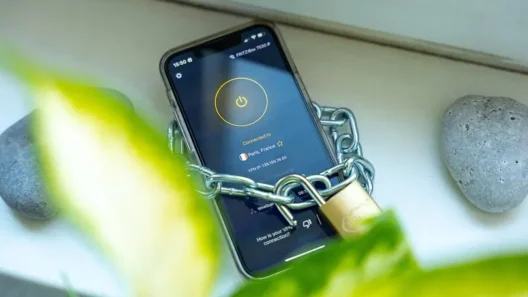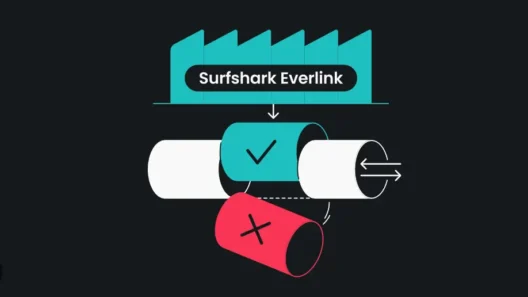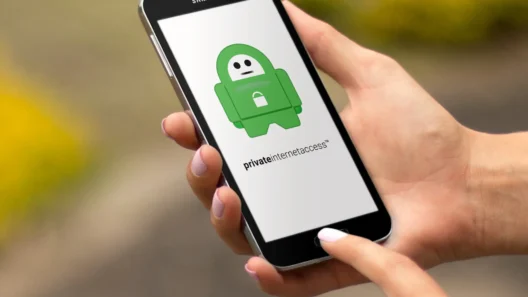Let’s be real: The day you google your own name and find your home address plastered all over some random website is the day you realize privacy isn’t what it used to be. Maybe it’s on some people search site you never signed up for, or hidden in an ancient forum post from your college days.
Suddenly, you’re asking yourself: “How did my address get out there?” and more importantly, “How do I make it disappear?”
If you’ve ever wondered why this is such a big deal, think about it: Once your home address is floating around online, you’re exposed to identity theft, creepy spam, targeted scams, even stalkers or burglars. And no, it’s not as easy as hitting “delete.” The process can feel like digital whack-a-mole—but don’t worry, you’re not powerless.
Why Is Your Address Online (and Who Put It There)?
Here’s the kicker: You don’t have to be famous, or careless, for your address to end up online. Sometimes all it takes is signing up for a store loyalty program, entering a sweepstake, or just filling out an innocent form on a website you trusted.
Welcome to the world of data brokers—companies whose entire business model is collecting, packaging, and selling personal information to marketers, recruiters, insurers, and, unfortunately, whoever is willing to pay.
The Big Risks of Having Your Address Online:
- Identity theft
- Stalking, harassment, or unwanted visitors
- Increased risk of burglary
- Annoying targeted ads, scams, and even financial repercussions
How to Find Out Where Your Address Is Online

Before you can fight back, you need to know where your address is lurking on the internet. For most people, this is the real shocker: It’s not just Google—there are dozens (sometimes hundreds) of sites quietly listing your info.
1. Google Yourself:
Search your full name and address in different variations. Throw in your phone number, email, or any nicknames you’ve ever used.
2. Check People Search Sites:
Websites like Spokeo, Whitepages, BeenVerified, and a long list of others specialize in collecting and displaying addresses, phone numbers, and even family details.
3. Investigate Data Brokers:
Names like Acxiom, Intelius, CoreLogic are some of the biggest players in the personal data industry.
4. Review Your Social Media:
Don’t forget Facebook, Instagram, LinkedIn, or any place you might’ve shared your location, check-ins, or personal details—even if it was years ago.
Step-by-Step: How to Remove Your Address from the Internet
1. Request Removal from People Search Sites
Here’s where things get tedious: Every website has its own “opt-out” process. Some require nothing but a few clicks, others make you jump through hoops—think filling out forms, sending ID, or waiting for weeks.
- Find the “Opt-Out” Page: Usually buried in the site’s footer or privacy section.
- Submit a Removal Request: Fill in the info, attach ID if required.
- Track Your Progress: Some sites email you confirmation, but for many, you’ll need to keep tabs yourself.
Pro Tip: Make a spreadsheet to track who you’ve contacted and what’s been removed. This is a marathon, not a sprint.
2. Opt-Out from Data Brokers
If people search sites are the tip of the iceberg, data brokers are the glacier below. They buy, sell, and swap your data at a global scale—meaning your address could pop up in places you never imagined.
- Find the Major Data Brokers: Start with big names like Acxiom, Intelius, CoreLogic.
- Check Their Opt-Out Process: Each has its own method—some online, some via email, a few still by snail mail (yes, really).
- Fill Out Required Forms: Some require copies of ID for verification.
- Follow Up: Don’t assume it’s done after one email. Data brokers are notorious for slow or partial responses.
3. Let Incogni Do It for You (The Easiest Solution)
Now, if all this sounds exhausting (because, honestly, it is), there is a shortcut: Incogni.
Try Incogni – Automated Data Removal Service
Here’s how Incogni works:
- Automates the entire data removal process across dozens of people search sites and data brokers.
- Sends official removal requests on your behalf—no more tedious forms or endless follow-ups.
- Updates you as your info is removed, so you’re not left wondering what’s going on.
- Covers not just your address, but also emails and phone numbers (up to 3 of each, if you’ve changed them over the years).
- Keeps your data off the market with an affordable subscription—protecting not just you, but also your family if you choose their “Family & Friends” plan.
Why I recommend Incogni:
If you value your time (and your sanity), this is the fastest, least painful way to take back control of your personal data. I’d honestly call it a no-brainer for anyone who wants to keep their life private without turning it into a full-time job.
How to Remove Your Address from Google Search Results
So, you’ve handled the people search sites and data brokers. But what about those Google results that stubbornly show your address—maybe from an old post, a public document, or a site you can’t control?
Google Removal Requests
If you spot your address in Google search results (especially on a page you don’t control), you have a few options:
- Request Content Removal from Google:
Google lets you ask for the removal of sensitive personal information—including home addresses—if it poses a risk (think doxxing or privacy violations).
Official Google Removal Tool - Report Outdated Content:
If the page with your address has already been deleted but still shows up in search, use Google’s Remove Outdated Content tool.
Remember: Google can’t remove your info from the original site—just from search results. You’ll still want to get it taken down at the source.
Suppress Old Information with Positive Content
Sometimes you can’t delete something, but you can bury it:
- Create new, relevant content under your name (think LinkedIn, your own website, guest posts). This helps push down old search results where your address appears.
- Keep your online profiles up to date and set to private wherever possible.
Lock Down Social Media Privacy (and Delete Hidden Address Data)
Social media is a goldmine for anyone looking to piece together your life. Even if you never posted your full address, a geotagged photo or a public post about your new apartment can spill more than you think.
Review Your Profile Settings
- Facebook, Instagram, LinkedIn, Twitter, TikTok—go through each profile and double-check what’s visible publicly.
- Set your location, “About Me,” or address fields to private or remove them completely.
- Check “check-in” histories, tagged locations, or public photo albums for hidden clues.
Remove Geotags from Photos
- EXIF data in photos often stores location information automatically (especially on smartphones). Before posting pics online, strip out this metadata. Free tools like ExifTool can help, or simply turn off geotagging in your phone’s camera settings.
Delete or Deactivate Old Accounts
- Forgotten profiles? Old forums, defunct apps, ancient blogs—these often leak personal info.
- Use services like JustDelete.Me to find out how to fully erase old accounts.
How to Remove Your Address from Forums, Websites, and Public Documents
Sometimes your address ends up on forums, public registries, or in scanned documents uploaded by someone else.
Reach Out Directly
- Contact webmasters:
Use the website’s contact form or “About” page. Politely ask them to remove your address. Most sites will cooperate, especially if you can show the content puts you at risk.
Use a DMCA Takedown Request
- If your address is published without your permission (and especially if it’s in a private context), you may be able to file a DMCA takedown.
How to File a DMCA Complaint
Future-Proof Your Privacy: Keep Your Address Off the Internet
The hard truth? Removing your address from the internet is never truly “done.” New listings pop up all the time as data brokers trade and resell information. But you can make yourself a much smaller target.
Smart Habits to Keep Your Info Private
- Regularly Search Your Name & Address: Set a reminder every few months.
- Opt Out Early and Often: Every new account or purchase is a chance for your data to leak. Don’t ignore privacy notices or opt-out links.
- Use a P.O. Box or Virtual Address: For deliveries, registrations, or public records—never use your real home address if you can avoid it.
- Limit Personal Info Online: Never overshare, even on “private” social media accounts. Data leaks happen all the time.
Automate It All with Incogni
Frankly, keeping up with all the new data leaks is a full-time job—which is why Incogni exists. Incogni keeps monitoring and sends new removal requests for you, so your info stays off the grid with zero hassle.
- One subscription, total peace of mind
- Covers multiple addresses, emails, and phone numbers
- Family & Friends plan for up to 4 loved ones
Conclusion: Your Address, Your Rules
The bottom line? You deserve privacy. It’s your right—not a luxury—for your home address to stay off random websites and out of the hands of data brokers.
It takes some effort (or a smart tool like Incogni), but with the steps above, you really can reclaim your digital privacy and sleep easier at night.
Final Tips: Stay Private, Stay Safe
- Be proactive: Don’t wait for a data breach or weird mail to get started.
- Automate the boring stuff: Tools like Incogni do the hard work so you don’t have to.
- Share this guide: Help your friends and family protect their privacy, too.
- Celebrate small wins: Every listing you get removed is a victory for your privacy.
FAQ: Removing Your Address from the Internet – All Your Questions Answered
Why does my address show up on Google?
Because third-party sites (people search, data brokers, forums) index and share your info. Google just finds what’s already public—it doesn’t create the listings.
Do data brokers really have my address?
Yes. Data brokers collect information from public records, online forms, surveys, and sometimes even loyalty programs or warranty cards. Your address, phone number, and sometimes even your relatives’ details can end up for sale.
Can I remove my address from the internet permanently?
You can get it removed from most major sites and brokers, but it’s not always 100% permanent. New leaks or sales can happen. Regular monitoring (or a service like Incogni) keeps you ahead.
Do I need to provide ID to remove my address?
Many major sites and brokers require ID verification to process opt-out requests. This is to make sure they’re really deleting your data, not someone else’s.
How long does it take for my address to disappear?
Removal can take anywhere from a few days to several weeks, depending on the site or broker. Automated services like Incogni can speed things up, but patience is key.














